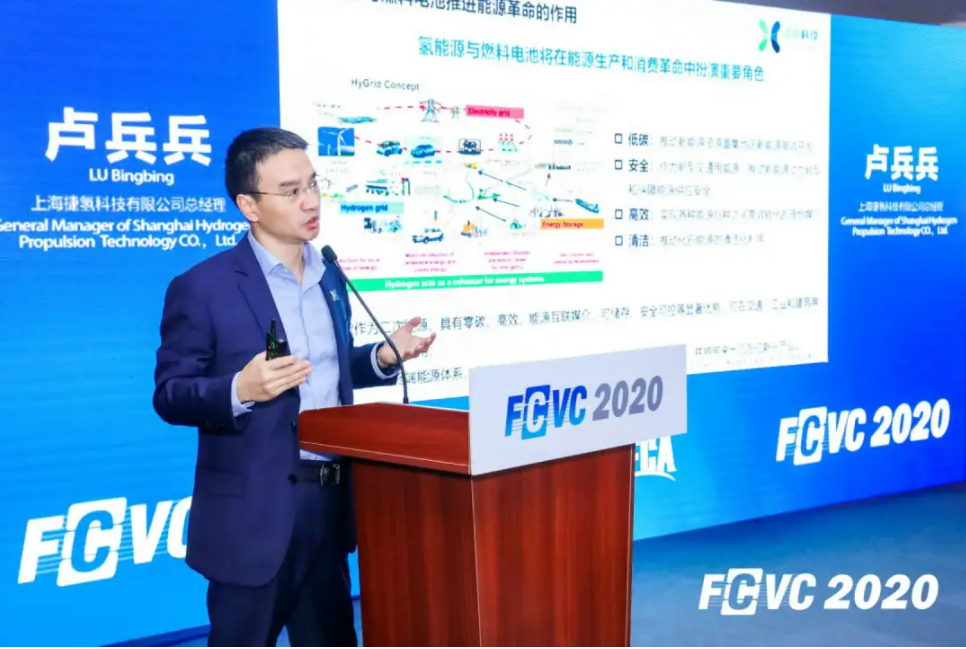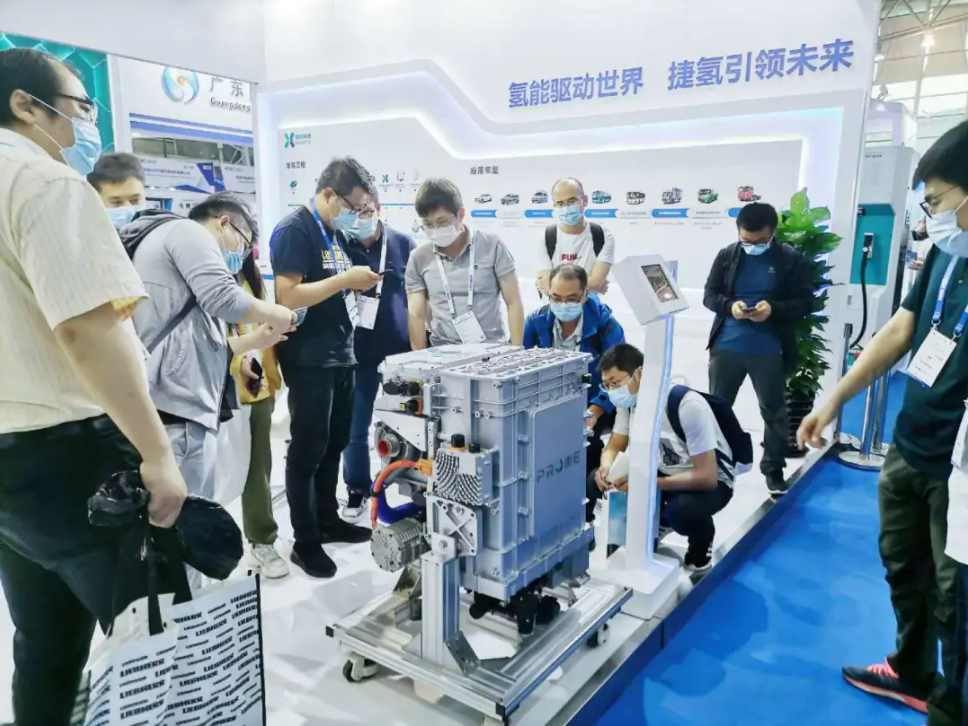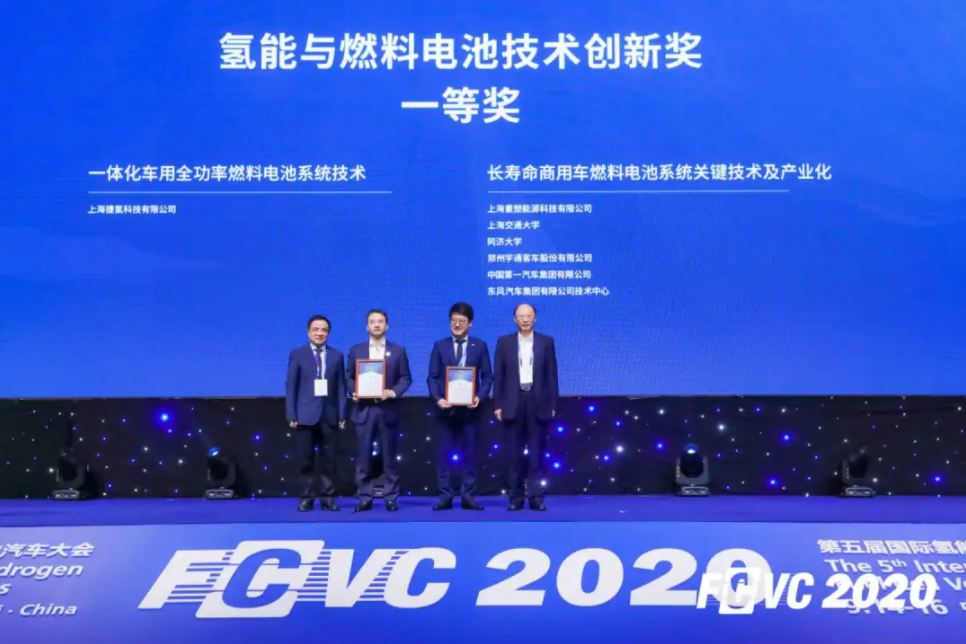 2020/9/20 0:00:00
2020/9/20 0:00:00 2229
2229
What is the role of enterprises in China's hydrogen energy industry? What are the industrial chains involved?
On June 27, 2018, Shanghai Jie Hydrogen Technology Co., Ltd. ("Jie Hydrogen Technology" for short) was formally established. Jie Hydrogen Technology has 20 years of experience in the development and application of fuel cell stacks, systems, and complete vehicles to accelerate the fuel cell industry Turn it into its own responsibility, and is committed to promoting the development of the hydrogen energy and fuel cell industry. Provide fuel cell products and engineering services for the industry, and have completed product development of a variety of fuel cell stacks and systems, with power ranging from 30kW to 130kW or more, and are widely used in passenger cars, light buses, city buses, light, medium and heavy trucks, etc. Many areas.
As a part of the hydrogen energy ecosystem, JieHydrogen is in the middle reaches of the fuel cell industry. The upstream is the hydrogen end (including hydrogen production, hydrogen storage, hydrogen transportation, and hydrogenation), and the downstream is the application end. JieHydro Technology insists on independent development, and currently masters the complete positive development capabilities from the development of core components of the stack (bipolar plates, membrane electrodes), stack integration, fuel cell system integration to power system integration, and vehicle integration. Complete independent intellectual property rights. As the "pioneer" in the commercial operation of fuel cell vehicles, the total mileage of commercial operation of fuel cell vehicles supported by JH Technology has exceeded 4.5 million kilometers.

▲Lu Bingbing gave a speech at FCVC2020 conference
Faced with the current situation of intensified competition in the industry, confrontation of similar products, and uncertainty in the total market, what considerations and countermeasures do companies have? And where is the company's competitive advantage?
The competitive advantage of JH Technology lies in its independent control of the core fuel cell technology and development capabilities. Established the ability to test and evaluate proton exchange membranes, catalysts, and gas diffusion layers, independent design capabilities for membrane electrodes and bipolar plates, and forward development capabilities for stacks and systems. JieHydrogen will continue to promote the localization of core materials based on the existing product platform by integrating domestic superior enterprises through application demand. At the same time as technological breakthroughs, it is necessary to reduce the cost of fuel cell core components and hydrogen through scale, to force technological progress through market applications, and to build a "circle of friends" for the industrialization of fuel cell vehicles.
Since the beginning of this year, JH Technology has continued to explore new application scenarios this year. Not long ago, SAIC Group signed contracts with Airport Group and Baowu Group. Soon, we will see fuel cell vehicles that "drink hydrogen and drain water" at airports and steel parks, and they will all be equipped with the fuel cell system of Jet Hydrogen Technology. . Fuel cell vehicles will be the first to realize small-scale commercial operations in areas where conditions permit, covering five major application scenarios, namely airports, port areas, steel parks, petrochemical parks, and coal mining areas. We will explore these scenes step by step.
Your company previously announced a proton exchange membrane fuel cell stack called PROME M3H, which caused a sensation in the market. Compared with other products on the market, what are its core advantages? Where are its innovation and breakthrough points?
The PROME M3H stack is the first stack product officially released by JH Technology. As the core of the fuel cell, the PROME M3H stack has the characteristics of vehicle-level, high performance, and high reliability, which can meet the diverse needs of customers.
As the core of the fuel cell system, the PROME M3H stack is completely independently designed and developed, and 58 first-level components are all localized. The degree of autonomy and localization rate have reached 100%, and each key parameter is in an international leading position. Among them, the power of the PROME M3H stack is as high as 130kW, and the stack power density is as high as 3.8kW/L. Thanks to the efficient energy conversion, the PROME M3H stack can realize the full power drive of the fuel cell vehicle, that is, the stack has the ability to make a car from start to stop, all power sources come from the stack, without relying on auxiliary power batteries .

▲JieHydrogen Technology PROME M3H Stack
It is understood that all the 58 first-level components of PROME M3H are localized. How difficult is it to achieve this degree of localization? What difficulties did your company overcome?
From the beginning of research and development, JieHydro Technology has followed the vehicle-level process. There are two processes for research and development. One is to decompose the performance requirements of the entire vehicle from the vehicle to the fuel cell system, the system to the stack, the stack to the core components, and the core components to specific materials. The second is the process of starting from material demand, making materials to support parts, parts supporting systems, and systems supporting automobiles.
There are 58 first-level parts in the stack, all of which can be made domestically and independently developed. However, in the upstream of these first-level parts, raw materials still involve import issues.
From the technical parameters of the stack and the system, some of our core technical parameters can be comparable to the international mainstream level, and even partly exceed them. However, it is undeniable that there are indeed gaps in domestic basic materials and basic research, so the joint efforts of upstream and downstream are still required, including the research and development of materials, stacks and systems, and the application of vehicles. We work together to promote the acceleration of localization.
PROME M3H can start at -30℃ in 30 seconds. What does this indicator mean? What impact will it have on the fuel cell industry?
The PROME M3H stack fully adopts the vehicle-level development process and test verification to ensure the reliability of the product. Stone roads, highways, uphill roads, icy and snowy roads... Various road conditions PROME M3H have all experienced. The data shows that PROME M3H has an ultra-long durability of 10,000h.
Behind the efficient conversion of energy is the constant challenge of the limit. The PROME M3H stack can adapt to various extreme environments: in the extreme cold environment of -30℃, PROME M3H can quickly start within 30s without auxiliary heating; the maximum working temperature of the stack can reach 95℃, with Excellent heat resistance. Whether it is severe cold or intense heat, PROME M3H can cope with ease, which has laid a solid foundation for the commercialization of fuel cell vehicles in diverse environments across the country.
What kind of changes do you think PROME M3H will bring to the fuel cell vehicle industry at home and abroad?
Before the release of the PROME M3H product, it was already favored by the market and even became a "hot model". At present, PROME M3H stack products are equipped with the P390 system, which has been applied to multi-model platforms, covering various fields such as passenger cars, light buses, city buses, and light, medium and heavy trucks. This year, it will achieve multi-regional, multi-application scenarios, and large-scale Widely implemented operations.
China's automotive fuel cell technology started late, but the market potential is huge. China is the world's largest automobile producer. What kind of impact do you think China's fuel cell industry will have on the global market?
China's vehicle fuel cell technology started late. New energy strategies are all based on China's national conditions, solving China's energy problems, solving China's technological problems, and solving China's innovation problems. Under such a background, what kind of technological route will China choose?
In the future stage of China, hydrogen energy technology will be realized in the field of passenger vehicles, and mass use will be the first to be realized in the field of commercial vehicles or high-end passenger vehicles. China currently leads the world in the landing of hydrogen fuel cell vehicles. SAIC's hydrogen fuel cell technology supports the technical realization of passenger vehicles, but it chooses to be applied in commercial vehicles on a large scale, and scale drives a virtuous circle. We believe that China's new energy technology route is leading the world, so it has reached the stage of new technology leadership.

▲JieHydrogen Technology won the first prize of the hydrogen energy and fuel cell technology innovation award
Finally, can you share the company's strategic layout and planning in 2020?
Adhering to the product planning strategy of "application generation, research and development generation, planning generation", JieHygen Technology continues to improve the technical level and market competitiveness of its products. In 2020, the PROME P390 series of Jet Hydrogen Technology will support nearly 500 fuel cell heavy truck applications, including Yuejin 12t/18t logistics vehicles and chassis, Hongyan 42t tractors and dump trucks, Dongfeng Xianglv, Dongfeng Huashen and Foton Daim Le and other different models.
China Hydrogen Energy Network: "Thank you very much Mr. Lu for sharing!"